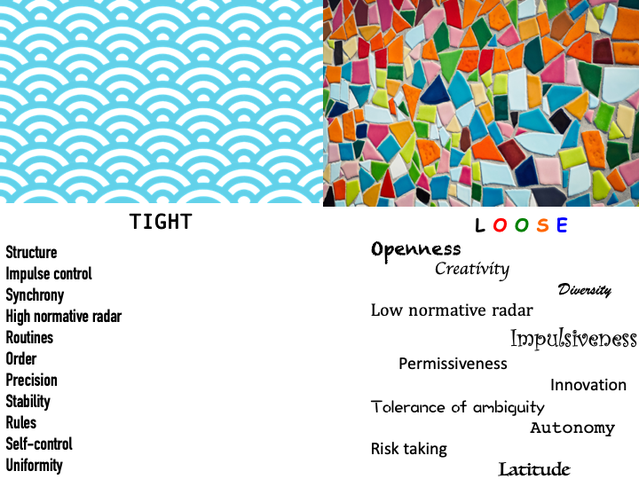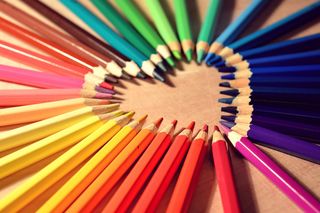Personality
A Big-Picture Look at Social Rules
Research on how people make and break rules can help us understand each other.
Posted December 27, 2018 Reviewed by Matt Huston

Imagine zooming in from space, close enough to catch a glimpse of earthlings moving about their days. What would you see? Humans driving their cars on roads (sometimes on the left, sometimes on the right); humans walking on gray pavements and leafy trails (sometimes alone, sometimes in groups, sometimes with animals); you’d see them laughing and crying, kissing and hugging; eating – with forks, sticks and hands; shaking hands, holding hands, waving hands; sleeping on beds and floors; celebrating life and grieving death; surviving, achieving, learning, fighting, working and loving.
What would be harder to see is the patchwork of rules that supports this day-to-day movement. We follow these rules on what cultural psychologist Michele Gelfand calls a normative autopilot – without giving them much thought. It’s when we leave our native lands (or zoom in from outer space) that we suddenly become aware that not only the rules themselves are different around the world, but so is the strength with which they are followed. Some cultures are tight. Their patchwork is woven in orderly and uniform stitches that don't leave much space for rule-breaking. Some cultures are loose, with more permissive seams that allow for less strict rule-following.

I recently spoke with Gelfand, who in her book Rule Makers, Rule Breakers makes a compelling case about the significance of the tight-loose dimension and how recognizing our cultural programming can help us understand each other better – across nations, organizations and families.
What insight has surprised you from your cross-cultural research?
I find it fascinating that the same principle can help explain reality at different levels. In my research, I keep seeing similar patterns of antecedents and consequences of tight-loose at national, organizational, and social class levels. I have even thought about the rising populism in politics and my own parenting style in terms of tight-loose. It helps to reduce the complexity of the world and it’s rewarding to see reality differently through a simple lens.
Why is the tight-loose dimension so important in defining cultural differences?
All human groups have rules or unwritten standards of behavior. What’s so fascinating about rules is how much we take them for granted. Rules help us predict each other and coordinate. We are constantly following them without recognizing that we’re following rules. For example, we are both wearing clothes to this interview. We obey stop lights. In restaurants, we don’t take food off people’s plates. In elevators, we don't face backwards. I think rules are among our most important inventions. We all have them. We all need them. But some groups need stronger rules to survive, and that’s where I started out with this project.

Why do cultures become tight or loose?
My hunch was that there is no common geography, religion, language or tradition that unifies tight and loose cultures. Rather, it’s about ecological and human threat. I looked at how many times nations had been invaded and how many natural disasters they’ve had. The idea is pretty simple: when groups have threat – whether it’s Mother Nature’s fury or invasions – then they need stronger rules to coordinate and to survive. By contrast, when we don't have threat, we can afford to loosen up and be a little more permissive. After the Boston bombing, you could see people tightening up. In my lab, if we have people feel a fake threat, they want stronger rules. The reason is because you feel like you can’t solve these things on your own, and you want cohesion as a group. You want strong rules and punishments that make people not defect. We saw the same principle in the U.S. election and in France: people who feel threatened feel like their country is too loose and they want stronger leaders. We better take history more seriously, because according to our ethnographies, what we are witnessing presently is historical replication.
What can rule makers and rule breakers learn from each other?
It’s important to remember that culture is not random. It arises and evolves for good reasons. Take Singapore, for instance. Singapore’s ban on gum is puzzling for many Americans. But when you step back and consider that Singapore is a very threatened place in terms of its ecology and population density (20,000 people per square mile), then it makes sense. People were throwing their gum on the ground and it was causing a big mess and malfunctions of trains and elevators. If you were born in Singapore, maybe you’d support a ban on gum, too. Often, we look at the strengths of our own cultures and the “liabilities” of other cultures. But there is always a tradeoff. For example, tight cultures have more order, synchrony, uniformity, self-regulation, impulse control and less crime. Loose cultures struggle with this. They are disorganized, have little synchrony and self-regulation. But while tight cultures struggle with openness, loose cultures are much more tolerant of a wide range of people, more open to different ideas and change, more creative. We all have deficits and strengths and we can appreciate better what they are once we understand why they have developed. We don't often notice why we are the way we are. We take our values and attitudes for granted. But consider this thought experiment: What would it be like if I happened to be born into this other country? Of course there would be some similarities, but you’d also have different opinions based on how rational they were in that context.
How can your research be beneficial for conflict resolution?
At the individual level, once people understand what kinds of threats others might have had or why they are more likely to have a loose vs. tight mindset, it can help us understand each other better and have more empathy for each other. An intervention we did where we asked Pakistanis and Americans to write daily diary entries demonstrates this. Both countries have extreme stereotypes of each other along the tight-loose lines: Pakistanis think Americans are very loose and Americans think Pakistanis are very tight. We had participants read the diary entries about people’s daily lives in Pakistan and the U.S. It was remarkable to see how this simple intervention reduced the participants’ cultural distance. They realized while they do have differences, they weren’t nearly as different as they thought they were. Not stereotyping and having some cultural empathy about why these differences evolved goes a long way in managing conflicts and improving our sense of how we can negotiate with the people around us.
What is a bigger driver of behavior – culture or personality?
They are bottom-up and top-down processes that are difficult to separate. For example, an individual’s mindset (tight vs. loose) can help them fit into strong or weak norms. If you live in a country where there are very loose norms, you need to have a lot of tolerance for ambiguity. In tight cultures, it’s the opposite: You need to have strong self-monitoring to detect norms. There is a constellation of personality differences that reinforce and maintain the strength of norms, so personality and culture are intricately connected.
How does the Goldilocks principle of avoiding extremes apply to optimal functioning and our day-to-day well-being?
People often ask me “What’s better – tight or loose?” and I say: “Neither!” It’s all about (cultural) balance. Groups tend to be tight or loose for good reasons. But as they get extreme, they start having problems. Cultures that start getting really loose become unpredictable. Cultures that start getting extraordinarily tight tend to become repressive. The same is true for companies, and even households. Parents who are too controlling or too laissez-faire produce poorly adapted kids. With kids or teenagers, we can think about the domains that need to be tight and domains where we can cut a little more slack. It’s empowering for kids to understand this.
The Goldilocks principle is found on different levels and has the same implication: We should be able to start diagnosing when groups are veering too much in either direction and then start negotiating. Maybe not every domain needs to be tight or loose and we can negotiate that by engaging in flexible tightness – inserting more flexibility, or structured looseness – adding more structure into the system.

How can your research findings be applied to improve people’s lives?
We can harness the norms that we develop as a human species to build a better planet by becoming more mindful of this omnipresent force in our lives. For example, for millennia, we have adapted from small groups to dealing with strangers and have figured out social norms for these big social shifts. The same is happening now with the internet. The uncivil behaviors that we witness online happen because people are not monitored face-to-face, which is why I think we need to tighten up the internet while also maintaining a healthy balance of freedom that it affords. Rules and latitude is something we have to learn to balance in all parts of our lives. It’s not easy, but when you start recognizing the patterns in why cultures evolve and what their consequences are, it gives us more power.
People ask me whether we are getting tighter or looser around the world. The answer is: both. Looseness has been increasing in the U.S. over the last 200 years, as we show in an upcoming paper in Nature Human Behavior, but at the same time, tightness can be evoked very easily. When we feel threat, whether it’s real or imagined, we can tighten up. And a huge task that we have before us is to discern when our threat is real or imagined.
Many thanks to Michele Gelfand for her time and insights. Dr. Gelfand is a Distinguished University Professor at the University of Maryland, College Park and the director of the Culture Lab. She uses field, experimental, computational, and neuroscience methods to understand the evolution of culture.




